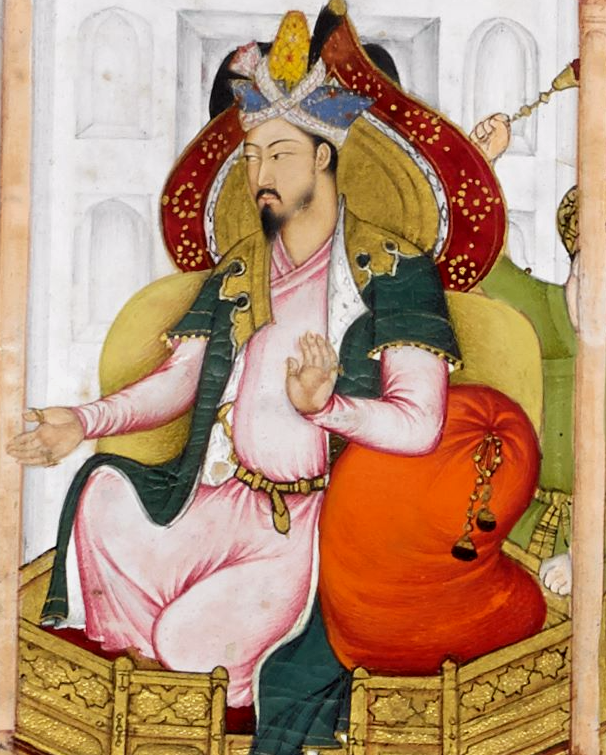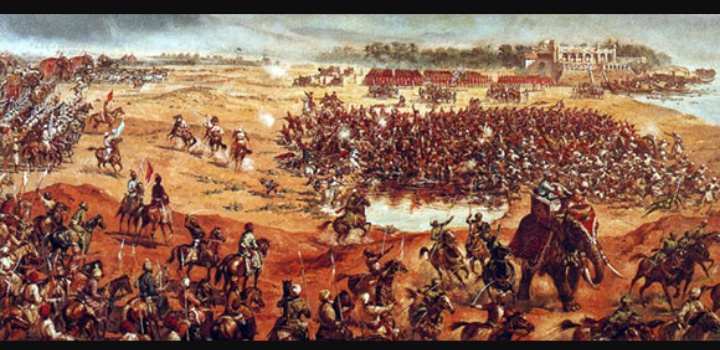The battle of Ghaghra, which Babur lost, pitted him against the combined forces of Mahmud Lodi, Ibrahim Lodi’s younger brother, and Nusrat Shah, Ibrahim Lodi’s son-in-law, who had marched up to Kanauja by defeating and ousting some Mughal officials in Uttar Pradesh.
In the battle of Ghaghra in 1529, however, Babur defeated Mahmud Lodi and Nusrat Shah’s combined forces. It was possible that this was his final battle. Babur had established a safe and secure position in India. Babur, on the other hand, did not live long enough to enjoy his empire. In 1530 A.D., he became ill and died. Babur had nominated his eldest son Humanyu as his successor only a few months before his death, and had asked him to be generous to his brothers.
The Battle of Ghaghra, fought in 1529, was a crucial battle in the Mughal Empire’s conquest of India. It came after the First Battle of Panipat, which took place in 1526, and the Battle of Khanwa, which took place in 1527. In the battle against the Eastern Afghan Confederates under Sultan Mahmud Lodi and the Sultanate of Bengal under Sultan Nusrat Shah, Mughal Emperor Babur’s forces were joined by Indian allies.
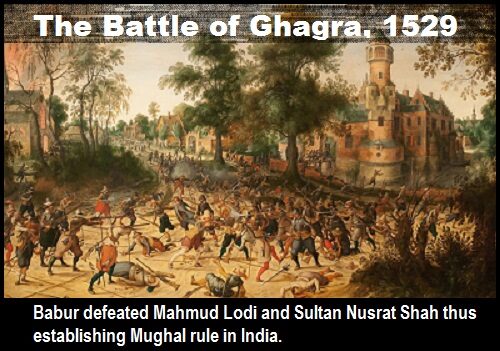
Background of Battle of Ghaghra
Sultan Mahmud Lodi, who aspired to the throne of Delhi and had been declared the rightful heir to the Delhi Sultanate by the Western Afghan Confederates with the assistance of the Rajput Confederates, was driven from power following his defeat at the Battle of Khanwa in 1527. He sought asylum in Gujarat. After attempting to contact his kinsmen in the east, he was able to join them. He conquered Bihar as the leader of the Eastern Afghan Confederates.
When Sultan Muhammad Shah Lohani, the new dynasty’s Pathan king of Bihar, died, he was succeeded by his minor son Sultan Jalal ud-Din Lohani, and the chief management of affairs, at least in Bihar, devolved on that prince’s mother Dudu and Farid Khan, better known as Sher Shah Suri. Sher Shah Suri had already achieved prominence; the country was distracted by the rival claims of the Lohani nobles concerning the young king, Baban and Bayezid, who exerted considerable influence over Sher Shah Suri and other chiefs. These factions, combined with the discomfiture suffered by the Pathans in preceding campaigns at the hands of Babur’s armies, eventually convinced the young prince to seek refuge in the Sultan of Bengal’s territories.
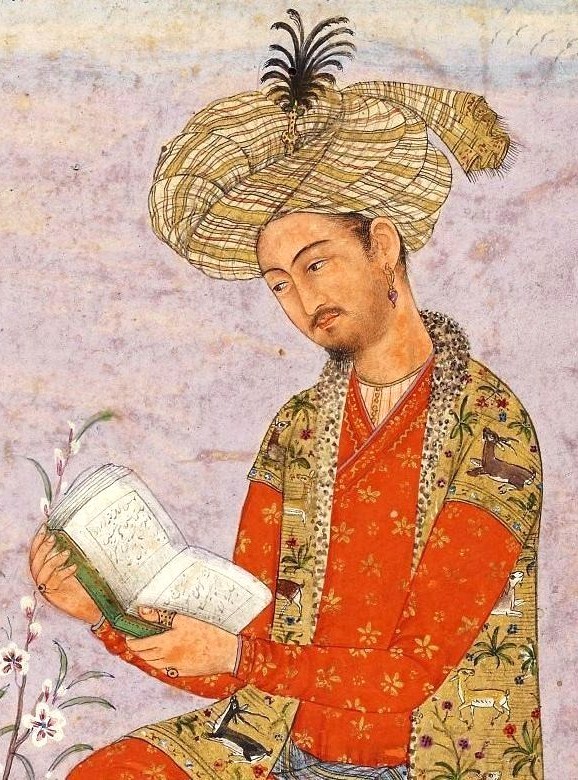
In this state of affairs, the Afghans of Jaunpur and indeed of India, in general, resolved to call in Sultan Mahmud Lodi, who had already attempted to ascend the throne of Delhi with the support of Rana Sanga. He had retired to Gujarat after being defeated in that attempt. He then traveled to Panna in Bundelkhand, where he waited for a favorable turn of events before accepting the invitation to ascend the throne of Bihar and Jaunpur. He was quickly joined by his countrymen from all directions and appears to have conquered nearly all of Bihar without opposition.
The most surprising is the secrecy and success with which such vast intrigues and movements appear to have been conducted, a fact that may be explained by each Pathan’s intense interest in the nation’s success and the fidelity shown by tribesmen to their chiefs and to one another.
Babur returned to Agra
The following day, Babur returned to Agra and informed his council that he would immediately assume command of the eastern army. He set out on February 2, 1529, with whatever troops he could muster, and crossed the Doab on February 27, 1529, to reach the right bank of the Ganges at Dakdaki. He was greeted here by his son Humayun, General Askari, and several other generals from the opposing side. He made an agreement with them that while his army marched down the right bank of the river, theirs would march down the left and always encamp directly across from his.
The information he received here was insufficiently satisfying. He discovered that the Pathans, who were straining every nerve to reclaim their military and political ascendancy, had gathered to the tune of 100,000 men around Sultan Mahmud Lodi. The Sultan had dispatched Baban and Sheikh Bayezid with a large force to Sirwar, while he kept along the Bihar bank of the Ganges with Fateh Khan Shirwani, the minister of Sultan Jalal ud-Din Lodi and Sultan Ibrahim Lodi in succession, by whom Mahmud had been joined and who had now deserted Babur as he had done his first master.
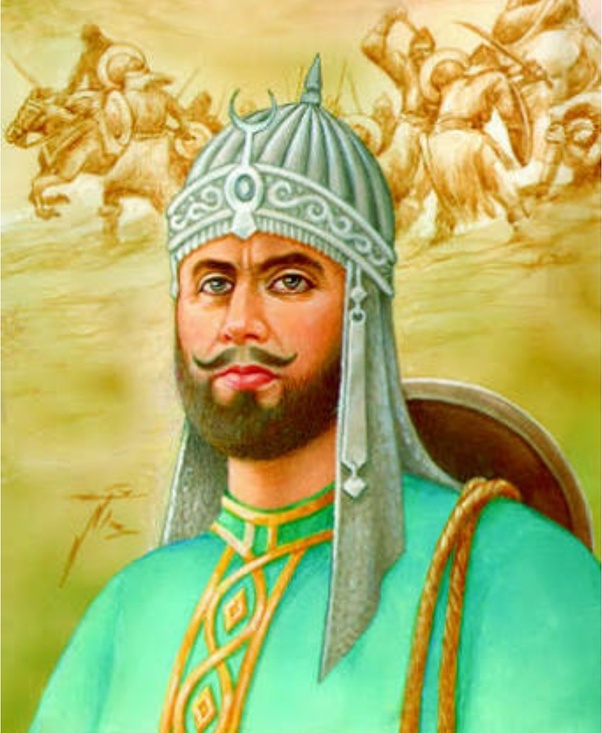
Sher Shah Suri, whom Babur honored with several Parganas and a command, had joined the insurgents, crossed the Ganges, and occupied Benares, from which the officers of Sultan Jalal ud-Din Sherki, a descendant of the country’s older dynasty who held the city under Babur’s authority, had fled on his approach.
As a result, there were three rivals for the Eastern or Sherki kingdom at the time.
- Sultan Jalal ud-Din Sherki, was the heir apparent to the older kings who ruled the country prior to Sultan Sikander Lodi’s conquest. He had recently submitted to Babur and sought protection from him. His claims had become somewhat obsolete, but they appeared to have been revived and acknowledged by Babur during this period, evidently to serve an immediate purpose.
- Sultan Jalal ud-Din Khan Lohani, a descendant of the Lohani family led the revolt against Sultan Ibrahim Lodi. He was supported by a large number of Afghan nobles in Bihar but had recently been forced to seek refuge with his ally, the Sultan of Bengal.
- Sultan Mahmud Lodi, the late Sultan Ibrahim Lodi’s brother and representative of the Lodi dynasty of Delhi, whom the Pathans had now united to support in his claims not only on Bihar but also on Delhi itself.
Babur, now aware of the true state of affairs, resumed his march down the Ganges’ banks. He was magnificently entertained while passing through Karra by Sultan Jalal ud-Din Sherki, the prince whose pretensions he favored and upon whom he bestowed nominal command of a division of his army. After a march or two beneath that city, the effects of his activity became apparent.
Lodi advanced to Chunar
He learned that Sultan Mahmud Lodi, who had recently advanced to Chunar and even launched an assault upon it, had immediately raised the siege and retreated in confusion upon receiving certain information of the Emperor’s approach, and that Sher Shah Suri had similarly abandoned Benares and recrossed the river with such haste that two of his boats were lost in the passage.
After the imperial army reached Allahabad, the confluence of the Ganges and Yamuna rivers, their streams began crossing the latter river to Priag on March 10, 1529. Babur advanced through Chunar, Benares, and Ghazipur, intent on attacking Sultan Mahmud, who had taken up position behind the Son River. At Ghazipur, Mahmud Khan Lohani, an influential Afghan, came and submitted to him, and while still near the same location, Sultan Jalal ud-Din Khan Lohani, the expelled prince and one of the remaining contenders for the Bihar throne, Sher Shah Suri, the future sovereign of Delhi, and other influential Afghans were sent to tender their submission.
This effectively ended the Lohani dynasty in Bihar, leaving only Sultan Mahmud Lodi and his adherents to contend with. Babur then crossed the Kermnas and camped beyond Chousa (which would become famous for his son’s calamity) and Baksara of Buxar. Marching from there, he discovered that Sultan Mahmud, whose army had been suffering daily defections and who had been lying nearby with only 2000 men, had fled precipitously upon the approach of an advanced party of the imperial army, had been pursued, and several of his men had been killed.
He also sought refuge with the Bengal army, which had crossed the Ganges, most likely in order to cooperate with him. Babur then traveled to the district of Ari in Bihar, which is located at the confluence of the Ganges and the Son rivers, where he invested Muhammad Zaman Mirza with the government of Bihar and established the revenue to be paid from that province.
Confrontation at Ghaghra River
The Emperor had now arrived opposite the point at which the Ghaghra River (also known as Gogra in some texts) enters the Ganges from the northeast, and where the kingdom of Bengal appears to have begun on the left bank of that river. He learned here that Sultan Mahmud Lodi was in the Bengal camp at the confluence of the two rivers with a group of Afghans and that when he and his followers attempted to remove their families and baggage, they were denied by the Bengalis, who were most likely hoping to retain them as hostages.
Sultan Jalal ud-Din Khan Lohani, his rival who had recently submitted to Babur, was similarly prevented from departing, despite the fact that he had come to blows with the Bengalis, effected a passage across the Ganges with his followers, and was on his way to join the imperial army. Thus, the Emperor, believing that the army of Bengal’s position and the conduct of its leaders had violated their neutrality, prepared to hold them accountable. After the collapse of the Delhi Sultanate, Nusrat Shah, the Sultan of Bengal, reclaimed some of his lost territories from the Pathans.
Babur discovered the army of Kherid, as the Bengal army was known, between what is now Saran territory in the north. It was camped near the Ganges-Ghaghra River confluence in order to defend both the Ghaghra River’s course and the left bank of the Ganges following the two rivers’ union. He also discovered that the Bengali generals had gathered approximately 100–150 vessels on their side of the stream, enabling them to simultaneously obstruct an enemy’s passage and facilitate their own.
He could not safely abandon such an army, especially given the fact that Baban and Bayezid’s troops had also sought refuge on and occupied the upper course of the Ghaghra River. He was indeed at peace with Bengal, but the shelter provided to his flying adversary, the position of the Kherid army, and the ambiguous conduct of its leaders necessitated that he obtain a categorical declaration of the Bengali government’s disposition and intention. As a result, he dispatched an envoy to Nusrat Shah, the Bengal Sultan.
Babur was now joined by Sultan Junaid Birlas of Jaunpur, who led an army of approximately 20,000 men. The troops’ tardy arrival resulted in a temporary embarrassment for their commander. After receiving no satisfactory response to his demands, the Emperor resolved to compel the army beyond the Ghaghra River to surrender its stronghold. He made the necessary preparations for the attack. His army was divided into six divisions.
Four of these, comprising Askari’s army, which was already on the eastern bank of the Ganges, and Sultan Junaid’s army, which had recently joined on the same side, were ordered to prepare to cross the Ghaghra River in boats at Haldi or by fording further up the river. Askari was Babur’s eldest son.
The other two divisions remained on the Ganges’ western bank. One of these, under the Emperor’s personal direction, was to affect the river’s passage and then to cover the operations of the Turkish Ustad Ali Quli, the Emperor’s chief engineer and commander of the artillery, who was directed to establish a battery on the banks of the Siru or Ghaghra River above its confluence with the Ganges directly opposite the Bengali camp, which it would be capable of cannonading, and then to cover the Emperor’s division’
Mustafa Rumi, another Turkish engineer, was to launch a cannonade on the flank of the enemy’s camp from the Bihar bank of the Ganges below the rivers’ confluence.
After crossing the Ghaghra River at Haldi, the main body of the army under Askari was ordered to march down upon the enemy in order to draw them from their camp and induce them to march up that river, thus keeping them occupied until the two divisions of Babur and Muhammad Zaman could be transported across under cover of artillery and matchlock men.
As a result, the entire army was mobilized. Askari’s four divisions marched in the direction of Haldi. Batteries on both the Ghaghra and Ganges rivers were constructed and activated. The Bengali army acted courageously, pushing parties across to attack the Emperor’s troops both above and below the rivers’ junction. Finally, following various movements.
Babur received word that Askari had crossed the Ghaghra River at the Haldi Ghat and was now prepared for action, bolstered by the defection of Shah Muhammad Maaruf, an Afghan nobleman of the highest rank and consequence who had deserted the confederacy with his followers and joined his camp. The general attack was therefore postponed until the following morning, but there was some fighting between the river vessels in the interim.
On May 6, 1529, as soon as Askari’s army was known to be in motion, Bengali troops advanced to meet him, and Babur immediately ordered his division and Muhammad Zaman’s division to cross over without delay. This was accomplished bravely, though not without stiff opposition. Some troops crossed in boats, others by swimming, and still others floated on reeds. They were greeted with equal gallantry upon landing, but remained united in formation and launched repeated ferocious charges. As Askari advanced north-west towards the enemy, the Bengali army, encircled and driven in on three sides, eventually abandoned the field in confusion.
Aftermath
This victory for Babur had far-reaching consequences. This victory can be traced to the point where we can say that had germinated the Mughals in Indian territory. Numerous Afghans who had been recalcitrant up to this point, having given up hope of reestablishing an Afghan government in the East, submitted, and Sultan Jalal ud-Din Khan Lohani, the late King of Bihar whose escape from the Bengali camp has been mentioned, arrived with a large contingent of his principal Amirs and acknowledged Babur. Other chiefs, following their lead, petitioned the Emperor for admission to his service. Thousands to tens of thousands of Lohani Afghans had already joined him and were now rewarded and employed. The Eastern provinces’ feuds between the Lohani and Lodi factions were fatal to the Pathan national interest. As for Nusrat Shah, the Sultan of Bengal, he hastily accepted peace proposals communicated to him prior to the battle via the envoy Babur had sent.